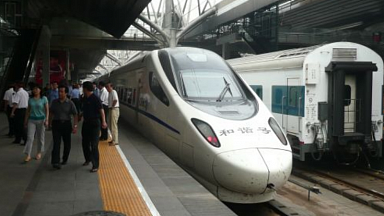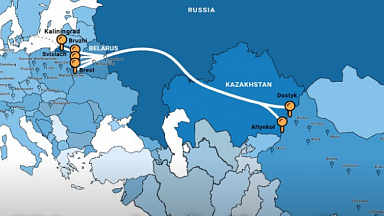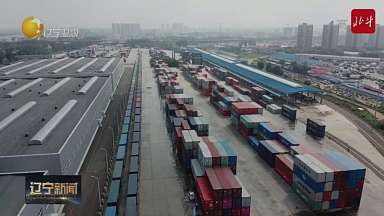According to the information of the ERAI portal by the end of 2021, 618 thousand TEUs traveled along the Eurasian transit railway route, which turned out to be 28% more than the indicators of the revolutionary 2020. What helps to keep the momentum?
In the past few years, we have seen the continuous growth of the volume of cross-border transport of CHINA RAILWAY Express (CR-express). In my view, the main reason is that the impact of the COVID-19, the port congestion, and the shortage of sea transport capacity caused by the high sea freight rates, led to the influx of goods into the CR-express market. Railway transportation ensures predictability and stable supply, which is also a key factor contributing to the growth of transportation volume. In addition to its advantages of safety, stability and high-speed transportation, the characteristics of low carbon, environmental protection and energy conservation are also the premise of the long lasted prosperous business.
Rapid growth of Eurasian rail transit
The COVID-19 crisis has ramped up the modal shift to rail transit services in Eurasia. What factors would you point out as key for Chinese consignors and logistics companies that opt for the Eurasian rail route?
Affected by the COVID-19, many shippers began to flock to the Eurasian railway transportation market compared with the Sea transport with high freight and shortage of capacity. At the same time, more and more consignors and logistics companies believe that Eurasian railway transportation is full of prospects with its advantages in efficiency, stability, and freight.
COVID-19’s impact on rail transit
China’s principled stance on COVID-19 has already led to several logistics failures. Some argue that the Chinese requirements are excessive. How do we mitigate the impact of such restrictions on freight flow? Could the containerization be a remedy for the problem?
The spread of the coronavirus has led to a worldwide, ongoing pandemic. China has taken timely, decisive, and effective measures in the fight against the virus, providing an important framework for moving forward as we combat COVID-19. The impact of the pandemic won’t last longer. During this period, the logistics business relying on railway transportation and container multimodal transport increased significantly and played a key role. In post-pandemic era some enterprises in this industry have become more determined and confident in developing container multimodal transport, which will become the main direction of port centralized transportation and strategic logistics in the future. I am confident that all levels of logistics activity will soon return to their pre-COVID levels.
New points on the map for Eurasian rail transit
Mainland cities of China are traditional origin and destination points for Eurasian rail transit. However, more and more containers are moving to and out of coastal provinces cities, e.g. Shanghai — Hamburg regular service. How would you assess the demand on such services and its sustainability?
The epidemic has disrupted the international trade. In 2021, the product exports are curbed by the COVID-19-related reasons such as the shortage of shipping capacity and the rise of ocean freight. At this critical moment, as the third channel of logistics, CR-express is of great significance in promoting international logistics and international trade. It provides customers with more choices. The continuous market demand in turn renders the CR-express transport develops in an increasingly market-oriented way, and help it gradually realizes sustainable development.
What does economic growth in Central China offer to Eurasian rail transit?
The increasing volume of CR-express transport in recent years highlights its role as strategic channel. Locating in the hinterland of the vast country, central China, like a backbone connecting the east to the west and the south to the north, has achieved sustained economic growth. A lot of goods in central China need to go out of the country by means of CR-express. The number of CR-express trips has increased. The prosperity of CR-express market has also further promoted the development of the local economy. It’s a win-win game.
China government subsidies for railway transportation
On 10th December, the Chinese government postponed the abolition of subsidies for rail freight until the end of next year. How did Chinese companies react to this news? What are the freight market players doing to get prepared for the cancellation of state support?
In the early days, subsidies fostered the growth of CR-express. It can be said that high subsidies built a greenhouse for some growing enterprises. However, the subsidy reduction and cancellation policy has raised concerns in the industry about the future development of CR-express. I don’t think subsidy reduction and cancellation is necessarily a bad thing, and it brings rationality and competitiveness to CR-express market. In the post-epidemic era, logistics companies like we Neptune who firmly practice the National «Belt and Road» initiative, must learn to survive, and develop without subsidies and support any more from the government, and raise their logistics service quality, improve the efficiency of freight transport, constantly develop new markets, and provide better products.
Maritime shipment rates: new normality?
Container shortages, the blockage of the Suez Canal and port closures in China have led to a spike in sea freight rates, especially those between China and Europe. If in April 2020 the WCI Drewry rate was $1,495, then by November 2021 this indicator reached $9,292, surpassing the psychological mark of $10,000 in September 2021. In your opinion, this is an indicator of systemic changes or a temporary disruption in global logistics?
As the Suez Canal clog and the pandemic continues to rage, shipping rates around the world have ballooned and many shipping companies have started to raise price. I think it is mainly related to the following points: 1. The shipping space is tight. Statistics show that foreign demand for Made-in-China products has been increasing in recent years. Several shipping companies made a lot of profit last year, and spent a lot of their profits on shipbuilding. It can be imagined that China’s export dividend is very large. 2. The epidemic impact. It has been two years since the outbreak of the epidemic. Port congestion and the absence of workers have blocked shipping and strained shipping capacity. I would say there may be a small decrease in ocean freight rates after the epidemic ends.
Plans for the future
What would you highlight as key goals for Neptune Logistics Group in 2022? What prospects does the company see for itself on the Eurasian transit route in the long term?
Founded in 2002, Neptune Logistics Group is headquartered in Shenzhen. Neptune is a practitioner of China’s «Belt and Road» Initiative, committed to provide customers with all-round, end-to-end logistics solutions. We are not only one of the early container carriers engaged in CR-express transportation, but also the leading international multimodal transportation company in China. We have passed the ISO 9001 2015 quality system certification. We have own Eurasian express truck fleet. We have established overseas warehouses in Hamburg, Warsaw, Moscow, and other overseas cities, and have a network layout map of 100+ depots in China, Russia, and Europe. We also have 25 wholly-owned subsidiaries in Europe and Asia. In the past ten years, Neptune logistics has believed that the Eurasian railway transport market is prospected, and so does in the future. In 2022, we will continue to increase investment in facilities, overseas operations, end-to-end services, personnel, and containers on the Eurasian continent with the CR-express as the main channel. This year, we will celebrate the 20th birthday of Neptune Logistics. In such a milestone year, Neptune will continue to set sail, adhering to the vision of «becoming a world-class logistics enterprise», reduce the transportation cost of the global supply chain, and achieve mutual success and value symbiosis with customers and partners.



